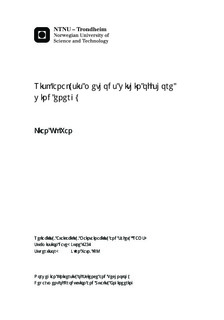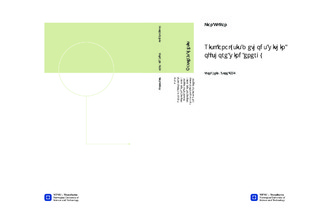| dc.contributor.advisor | Vatn, Jørn | nb_NO |
| dc.contributor.author | Van, Lian Uk | nb_NO |
| dc.date.accessioned | 2014-12-19T12:21:02Z | |
| dc.date.available | 2014-12-19T12:21:02Z | |
| dc.date.created | 2013-06-16 | nb_NO |
| dc.date.issued | 2012 | nb_NO |
| dc.identifier | 629237 | nb_NO |
| dc.identifier | ntnudaim:8311 | nb_NO |
| dc.identifier.uri | http://hdl.handle.net/11250/240884 | |
| dc.description.abstract | This report starts discussing a number of possible risk analysis methods related to five challenges identified by SINTEF within offshore renewable wind energy industry, and it ends up with case studies on two challenges by testing SPAR-H method and proposing risk reducing measures. I answer to all the questions, which are defined in the thesis assignment, by first selecting all the five safety challenges. I consider different risk analysis techniques and suggest a few of them for each individual challenges in a tabular fashion. I describe the proposed risk analysis techniques with their strengths and limitation and discuss, to a considerable extent, how they can be related to the challenges. The risk analysis techniques I suggested includes both technical and human error related methods. The technical related methods are based on some available risk analysis methods which are broadly acceptable in different applications. The human error analysis techniques, which have been practiced in nuclear industry, are the main focus in this report as it is believed that the techniques could be applicable in the offshore wind firm industry. Among the different challenges in HSE offshore wind farm operation, two challenges: collision (between the vessel and the wind turbine) and Access or egress from/to the offshore installation are presented as the main important part in the report. Because accident is most likely to happen when personnel transfer is required. Possible human errors and probability of accident due to those errors are broadly discussed. Possible risk-reducing measures to reduce the identified human errors and recommendation which may prevent the potential accident are discussed at the end of the report | nb_NO |
| dc.language | eng | nb_NO |
| dc.publisher | Institutt for produksjons- og kvalitetsteknikk | nb_NO |
| dc.title | Risk analysis methods within offshore wind energy | nb_NO |
| dc.type | Master thesis | nb_NO |
| dc.source.pagenumber | 109 | nb_NO |
| dc.contributor.department | Norges teknisk-naturvitenskapelige universitet, Fakultet for ingeniørvitenskap og teknologi, Institutt for produksjons- og kvalitetsteknikk | nb_NO |

